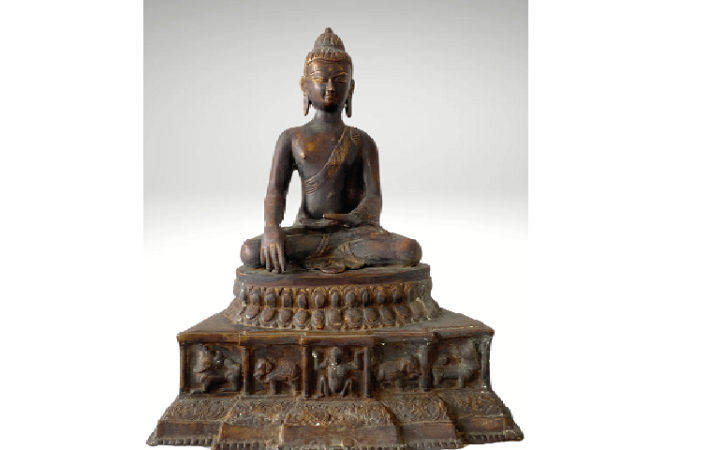
The Timeless Beauty of Buddha Statues and Buddhist Art
Throughout history, art has been a powerful medium to express spirituality, culture, and human aspirations. Among the most revered creations in the world of spiritual artistry are Buddha Statues and the broader tradition of Buddhist Art. These works not only embody aesthetic beauty but also reflect centuries of devotion, wisdom, and the pursuit of inner peace.
The Origins of Buddhist Art
Buddhist Art has a rich history that stretches back over 2,000 years. It began in India after the passing of Siddhartha Gautama, the historical Buddha. In the earliest stages, Buddha was not represented in human form; instead, his presence was symbolized through sacred images such as the Bodhi tree, the Dharma wheel, or an empty throne.
It was only centuries later that artisans began creating Buddha Statues, portraying the enlightened one in various poses, each symbolizing aspects of his teachings. This marked a new era where art became not just a cultural expression but also a tool for meditation and spiritual connection.
The Significance of Buddha Statues
Buddha Statues are more than ornamental figures—they are sacred symbols that carry deep spiritual meaning. Each statue reflects aspects of Buddha’s teachings, whether it is the calmness of meditation, the courage to face challenges, or the wisdom to share knowledge with others.
Different poses, known as mudras, represent different teachings:
-
Meditation Pose (Dhyana Mudra): Symbolizes inner peace and mindfulness.
-
Teaching Pose (Dharmachakra Mudra): Reflects the turning of the wheel of Dharma, or spreading wisdom.
-
Protection Pose (Abhaya Mudra): A gesture of reassurance and fearlessness.
-
Reclining Buddha: Represents Buddha’s final moments before entering Nirvana.
By placing a Buddha statue in homes, temples, or gardens, people invite peace, harmony, and mindfulness into their environment.
Buddhist Art Across Cultures
One of the most fascinating aspects of Buddhist Art is how it evolved across cultures. As Buddhism spread from India to Asia and beyond, artisans in each region interpreted Buddha’s image through their own cultural lens.
-
India: Known for some of the earliest stone carvings and statues, often simple yet deeply symbolic.
-
China: Introduced more elaborate designs, with Buddha statues that highlighted compassion and serenity.
-
Japan: Focused on elegance and refinement, with statues often made of wood or bronze.
-
Thailand and Southeast Asia: Created golden, highly detailed Buddha statues that emphasized divinity and enlightenment.
This cultural diversity highlights the universal appeal of Buddhist teachings while showcasing unique artistic traditions.
The Role of Buddhist Art in Daily Life
For many practitioners, Buddhist Art is not just about visual appreciation; it plays a vital role in spiritual practice. Monks, devotees, and meditation practitioners use statues, paintings, and mandalas as tools to focus the mind, cultivate compassion, and deepen mindfulness.
Buddha Statues, for instance, are often placed in meditation rooms, gardens, and temples to inspire calmness. Similarly, Buddhist paintings and murals tell stories from Buddha’s life, offering moral lessons and guidance for followers.
In modern times, many people incorporate Buddhist art into their homes not only for spiritual reasons but also for its calming and aesthetic qualities. The serene expressions and graceful designs of these works bring tranquility to any space.
Craftsmanship Behind Buddha Statues
The creation of Buddha Statues is an art form that requires devotion, patience, and skill. Artisans often follow traditional methods passed down through generations. Depending on the region, statues are made from stone, wood, clay, bronze, or even gold.
Bronze casting, for example, allows for fine detailing in facial expressions and clothing folds, while stone carvings emphasize strength and permanence. Each material adds unique qualities, but the intent behind the craftsmanship remains the same: to honor the teachings of Buddha and inspire mindfulness.
Modern Relevance of Buddhist Art
In today’s fast-paced world, where stress and distractions are constant, the presence of Buddha Statues and Buddhist Art has become increasingly meaningful. Many individuals turn to these sacred pieces as reminders to slow down, breathe, and reconnect with inner peace.
Interior designers also recognize the value of Buddhist art in creating harmonious living spaces. Whether displayed in homes, yoga studios, or wellness centers, these works of art foster balance, calmness, and spiritual reflection.
Choosing Buddha Statues and Buddhist Art
When selecting a statue or artwork, intention plays an important role. Some may choose a meditating Buddha for personal reflection, while others prefer a teaching Buddha to inspire wisdom and learning. Similarly, collectors of Buddhist Art often seek authentic pieces that reflect cultural heritage and spiritual significance.
It is also important to purchase from ethical sources that support artisans and respect cultural traditions. Doing so ensures that the spiritual and artistic value of these creations is preserved.
Final Thoughts
The legacy of Buddha Statues and Buddhist Art continues to inspire millions around the world. These timeless creations are not just objects of beauty—they are pathways to mindfulness, reminders of compassion, and symbols of enlightenment.
From ancient temples in Asia to modern meditation rooms, Buddhist art connects people to a higher sense of peace and purpose. In a world that often feels chaotic, these sacred works remain steady beacons of harmony and wisdom, guiding individuals toward a life of mindfulness and inner serenity.










